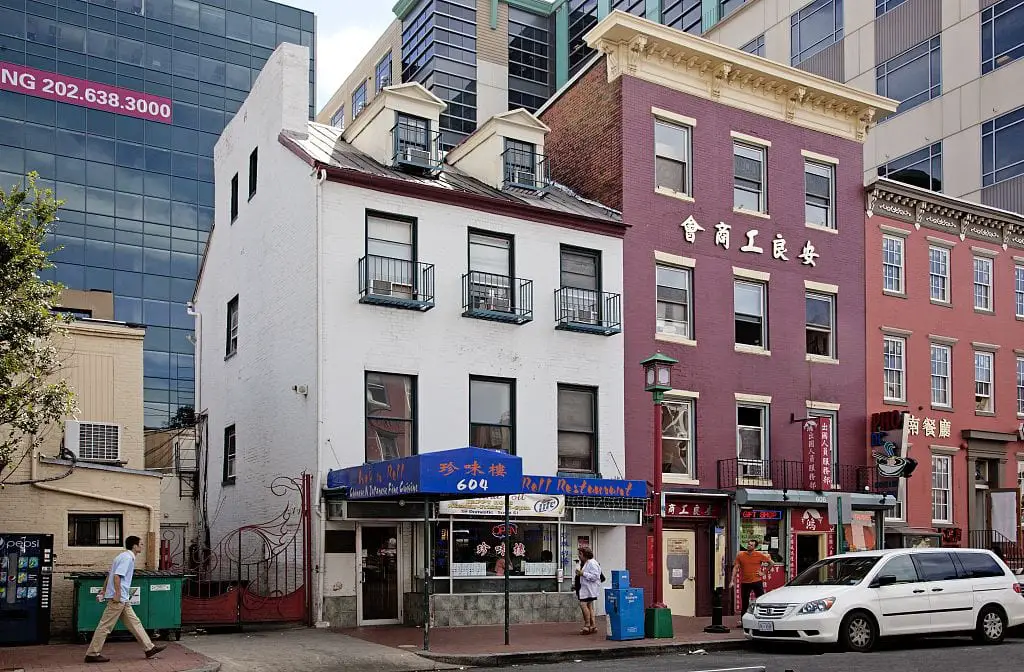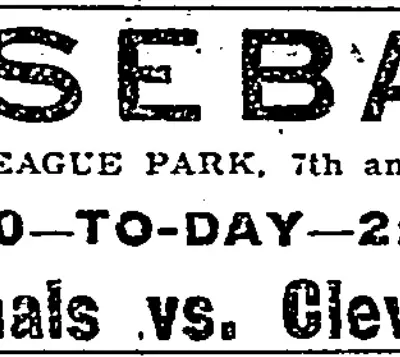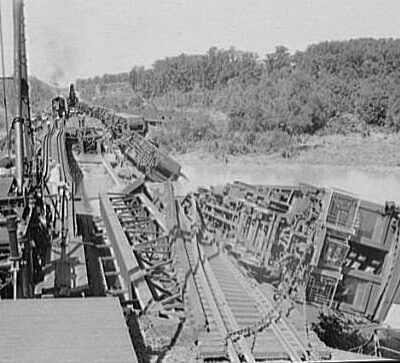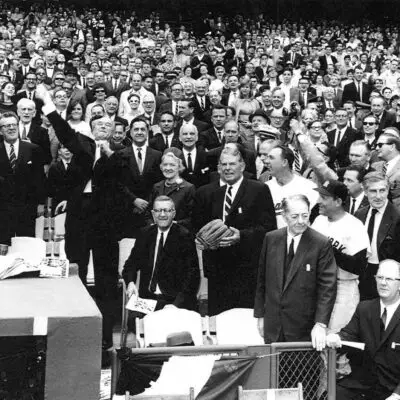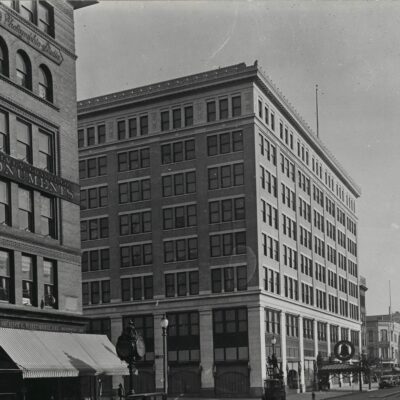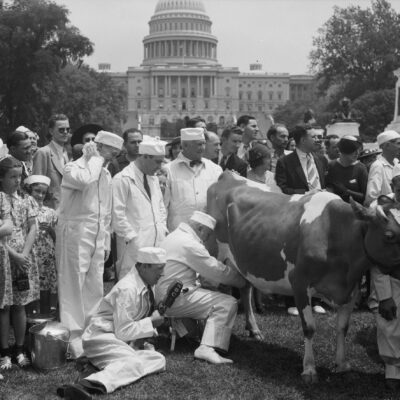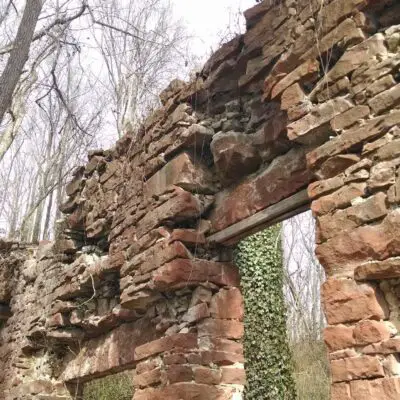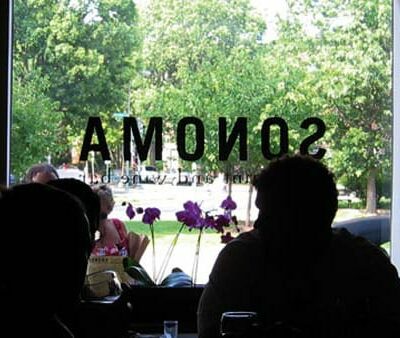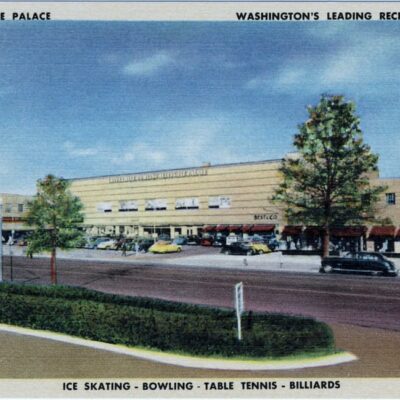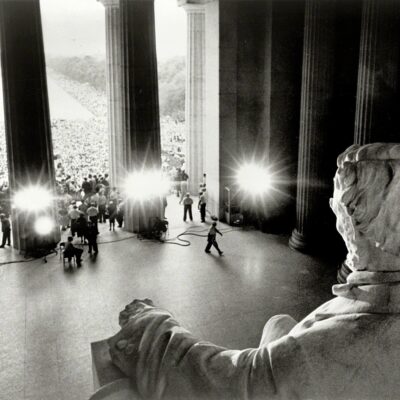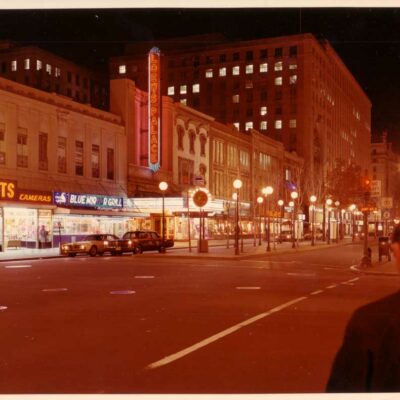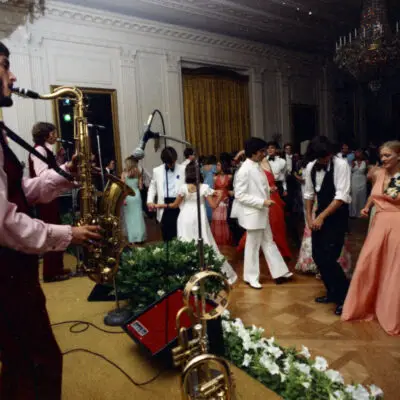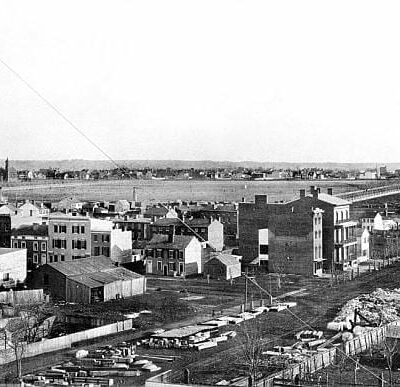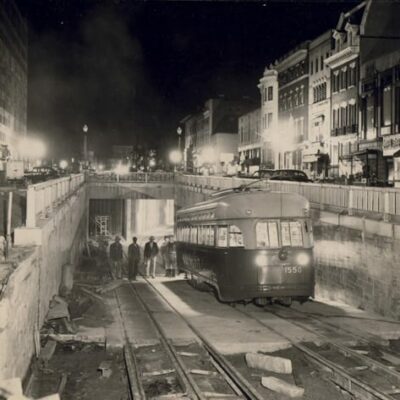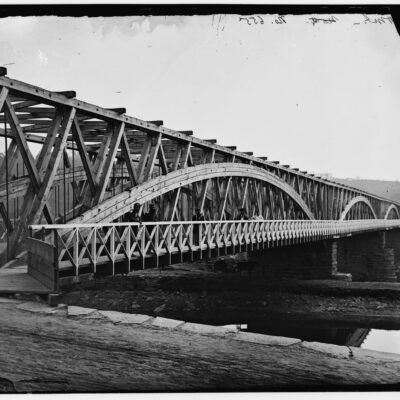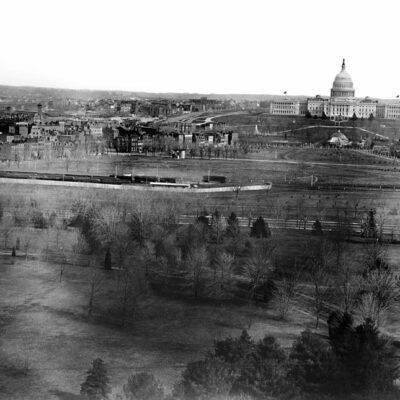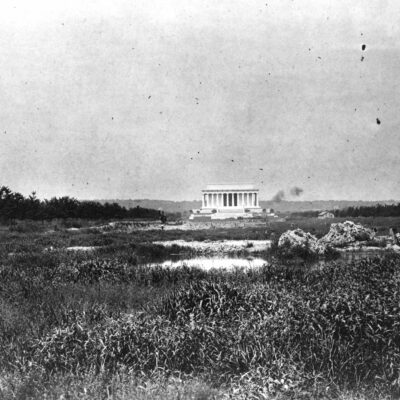This is a guest post by Angela Harrison Eng.
I’ve been to D.C.’s Chinatown a number of times. I even remember passing the Wok and Roll restaurant at 604 H Street NW. The restaurant name certainly stands out in the ever-shrinking neighborhood. I did not know, however, that the building housing the Wok and Roll Restaurant is actually a fascinating piece of D.C. history. As a relative newcomer to the area, I only found out recently that it was the former Mary Surratt Boarding House, which played a fairly prominent part in the assassination of Abraham Lincoln.
The original address was 541 H Street NW. The National Register of Historic Places’ (NRHP) entry for the Surratt House states it was built in 1843 as a “three and a half story, pre-Civil War brick dwelling designed in a vernacular Greek Revival style of architecture.”
Mary’s husband, John Surratt, bought the building in 1853. Following John’s unexpected death in 1862, Mary rented out their family tavern in Maryland and moved to the home on H Street with her children. She converted the large row house into a boardinghouse as a means of income, although some historians speculate she had more nefarious purposes in mind.
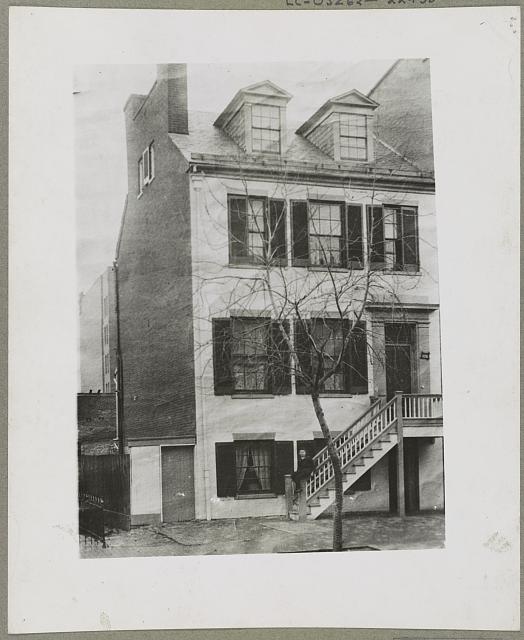
Mary Surratt was suspected to be a Confederate sympathizer and actively participated in aiding the Confederacy. The NRHP document notes that assassination conspirators John Wilkes Booth (check out this ad for his acting debut), Lewis Powell, and George Atzerodt all stayed at the property between September 1864 and April 1865. Surratt was arrested on April 17, 1865, two days after Lincoln’s assassination. The April 20th edition of The Sun in Baltimore describes how the detectives arrived at the home:
“The man who thus entered the house bored evidence at once of having assumed a partial disguise. He had a heavy pickaxe on his shoulder, wore a cap made from the bottom part of the leg of a pair of drawers . . . gray coat and vest, black or dark colored pants, a light pair of boots. Both boots and pants were covered with mud up to the knee.” The police interrogated him, and he claimed he was hired to “dig a gutter for Mrs. Surratt, and wanted to now what time he should begin in the morning.” Surratt, however, claimed to not know him. He was identified later by a servant as a player in the assassination attempt of William Seward. Surratt’s trial ended in June of 1865 and she was sentenced to death for her role in the assassination.
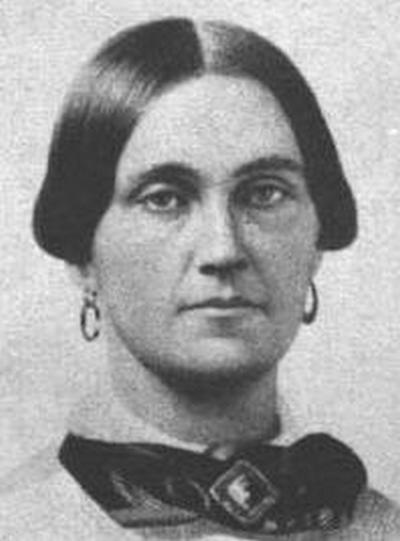
Many believed Surratt guilty of conspiring against Lincoln. An April 1865 Times-Picayune article referred to the home as “a regular treason-brewing nest.” Letters expressing disdain towards Lincoln, a letter to John Wilkes Booth, and anti-President propaganda were described as evidence.
Coupled with the untimely arrival of Lewis Powell, she was believed guilty by the press and the general public. One news article described Surratt as a “veiled Jezebel and “she-devil ring-leader.” There is a lot of speculation as to how big a part she played in the Lincoln assassination.
Fingers point to her as both innocent and guilty. Whatever the case, it is clear from these editorial comments that newspapers were unsympathetic to her plight, declaring her guilty even before her formal trial. Surratt, Powell, Atzerodt, and Herold (another conspirator) were hanged on July 7, 1865. She was the first woman executed by the United States government.
It is unclear what happened to the house immediately following Surratt’s death. One forum thread suggests that Anna still resided in the home afterwards, but by late October 1865, there were several auctions of the furnishings inside and she was no longer there. The NRHP states that the home was auctioned off in June 1866 to pay off the Surratt family’s debt.
The dwelling changed hands several times and remained a boarding house through the turn of the century. By 1922, the second story entrance was in disuse and the stairs had collapsed. A public auction for the property suggests that the house was in dire need of renovation.
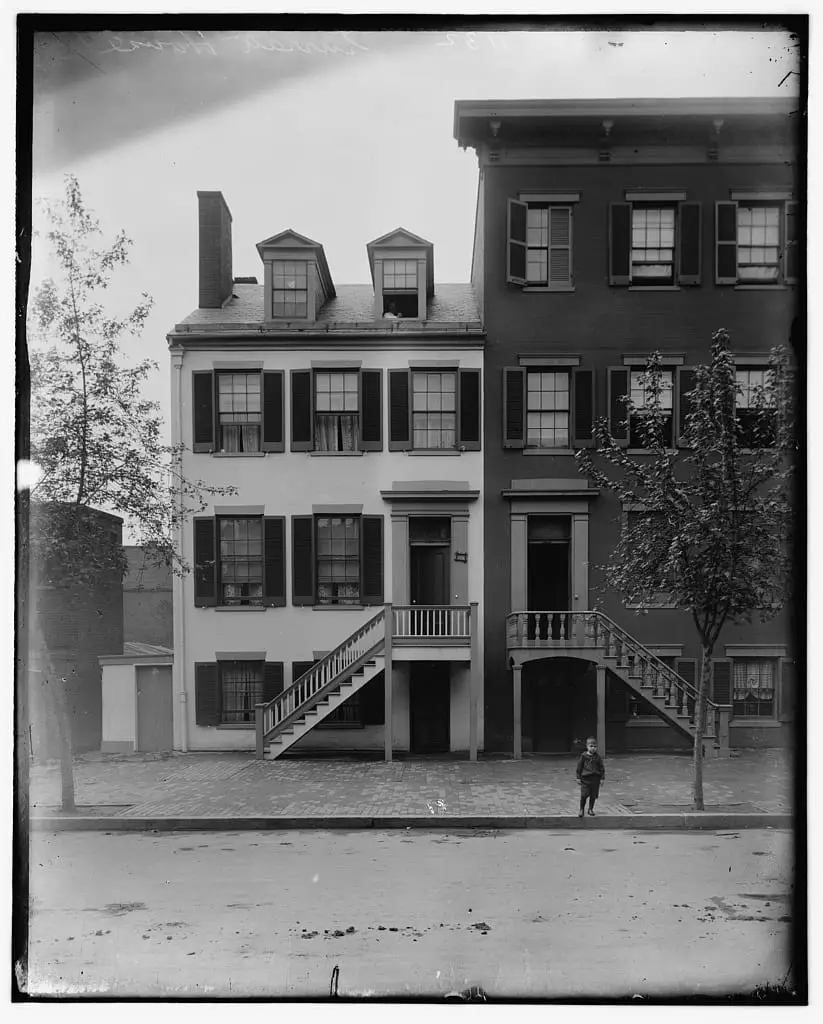
In 1925, the owner contracted significant renovations to the building:
“Historically set upon a raised foundation with an English basement, the building currently features a first-story storefront installed as part of a 1925 renovation and since altered . . . The major alteration includes the circa 1925 construction of a street-level commercial storefront on the façade, along with the removal of the raised entry door (converted into a window) and the wooden stair which provided access to the door . . . Although many of the original windows have been replaced, the dormer-level windows, the east end gable windows, and one window in the rear elevation are historic.”
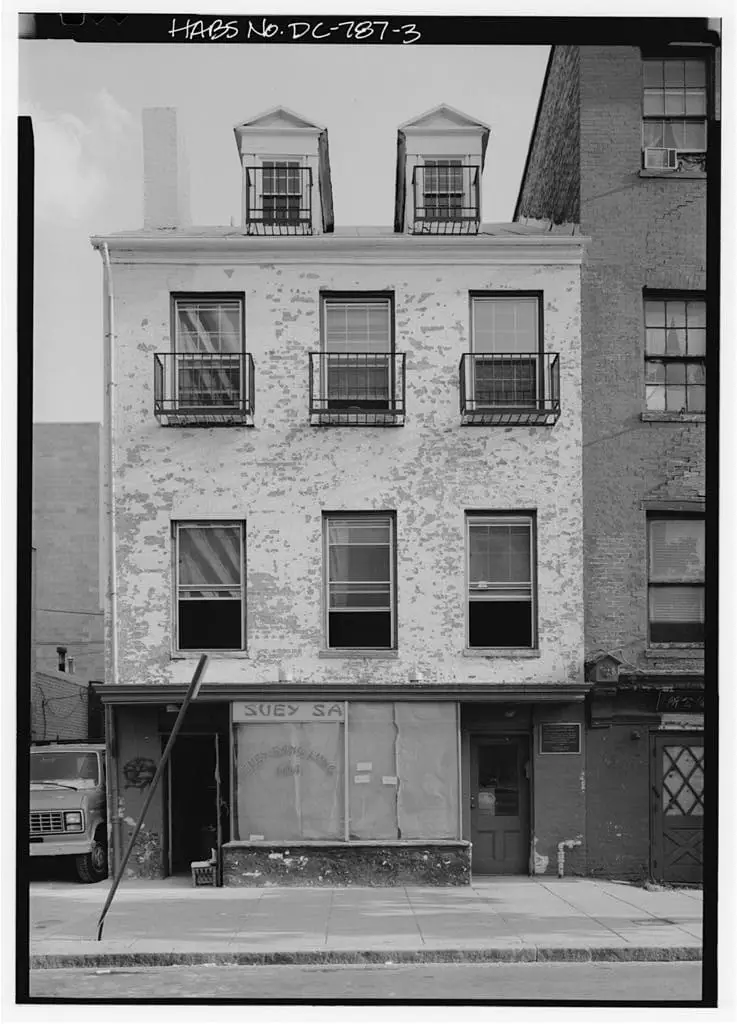
The Register notes that the first tenant of the bottom floor was the Piccadilly Bottle Supply Company, which operated in violation of Prohibition law. It was raided in 1928 by a D.C. Police “flying squadron” and found in violation of Prohibition law. Six men were arrested for the possession or distribution of alcohol. The following tenants reflected the change in the H street corridor during the 1930s when immigrants were relocated from Federal Triangle: Yow Chin Teas, High Wah and Co. importers, the Suey Sang Lung Grocery. Evidence of the latter business can be seen in the 1925 photograph above.
Currently, the building houses the Wok and Roll Restaurant, which serves both Chinese and Japanese food. The upper rooms have been converted to karaoke lounges. As I wrote this article, I wondered if the public had an idea how historic the building is. I found a blog post that mentioned a sit-down dinner and dramatic reading of The Judicial Murder of Mary Surratt at the restaurant in 2005.
A recent Yelp review in January 2015 comments, “As I have yet to eat food coming out of Mary Surratt’s “Wok”, this review is really just for her “Roll” (the semi-hidden karaoke space upstairs).” Another reviewer casually mentioned that the ghost of Mary Surratt “roams around.” One hundred and fifty years after the Civil War, the building has traded assassination plans for the culinary fare of Japan. Many may never know its place in political history.
